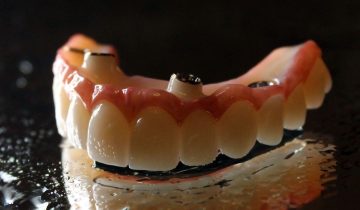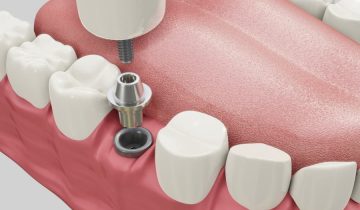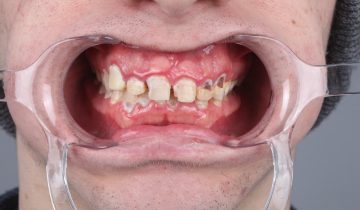Last updated on August 31st, 2023
In a dental implant procedure, a metal post is screwed into the jawbone, and an artificial tooth is attached to the post This is a very brief description of the procedure. It is apparent that many patients want to know more about the surgery since there are different types of dental implants, and each case might require a unique approach to the problem. This blog post will explain dental implant types and procedural steps clearly. Plus, you will find a bunch of key takeaways about preparations to be taken before implant surgery and after post-operative care. The FAQs section at the very end can help you clear your mind about the dental implant procedure.
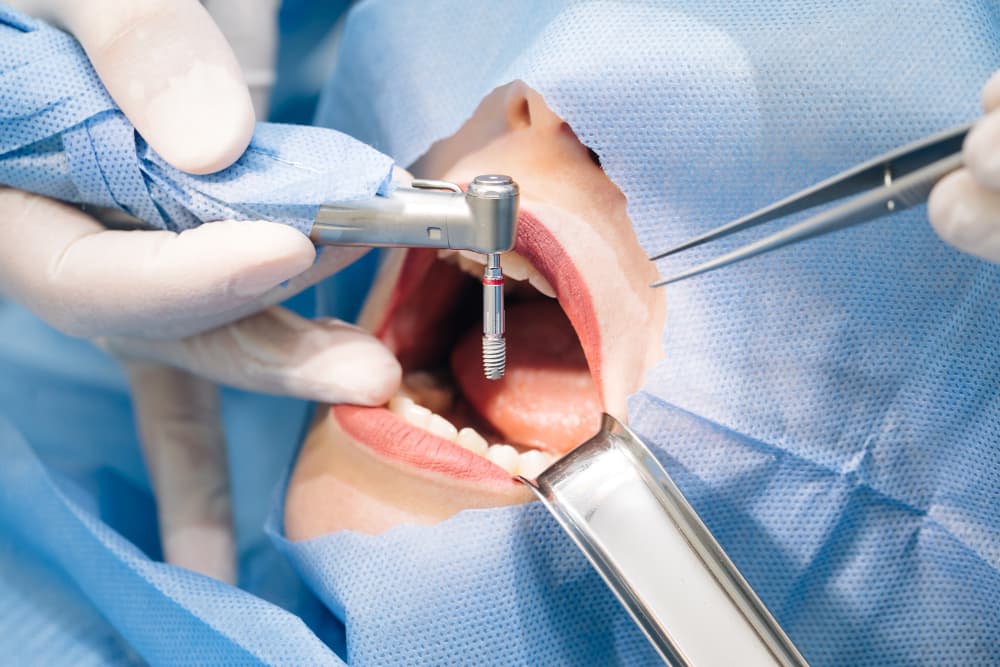
What Are The Steps Of A Dental Implant?
The basic steps of dental implant treatments are as follows:
- Osseointegration
- Abutment Placement
- Placing The Artificial Tooth
- Placing The Permanent Tooth
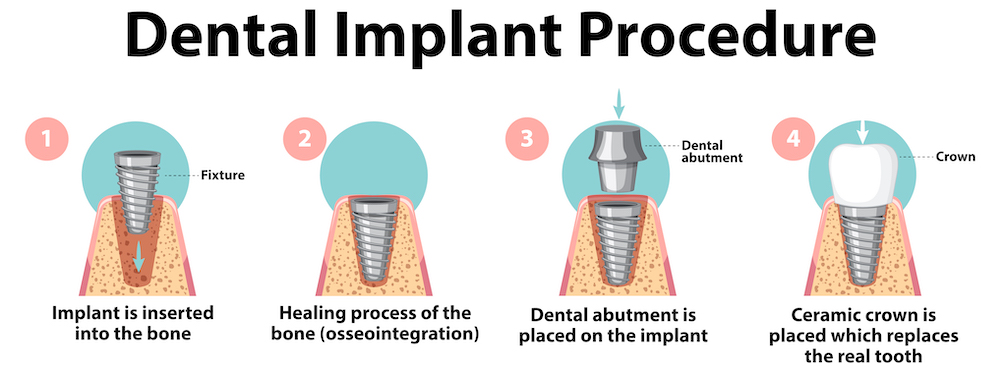
Osseointegration
Osseointegration is the process in which the post is assimilated into the bone. This process can take 3-6 months.
Abutment Placement
Once the gums heal after the osseointegration, you go back to the clinic to get the abutment. The recovery after the abutment can take up to 2 weeks.
Placing The Artificial Tooth
Until the fabrication of your permanent tooth is done, you get a temporary crown to cover the gap.
Placing The Permanent Tooth
Once the implant area is healed and your permanent tooth is ready, the dentist replaces the temporary tooth with the permanent one.
What is the Surgery Timeline of Dental Implant Procedure?
Though the steps are given separately, some of these steps can be merged depending on the healing and fabrication time. Also, a dental implant timeline generally includes a set of pre-treatment procedures, and they might affect the further steps of the process. Therefore, a patient should consider dental implant procedure steps and dental implant procedure timeline wholly. Here is a practical timeline including every step in the dental implant procedure.
| Dental Implant Procedure Steps | Dental Implant Procedure Timeline |
| Initial consultation | Depending on your and dentist’s schedule. It may take a week. |
| Prerequisite treatments (bone grafting, sinus augmentation, tooth extraction…etc) | Depending on the type of treatment and healing, it might take as long as a year |
| Implant placement and healing | The placement takes 1-2 hours, but healing can take 1-2 weeks. |
| Osseointegration | It takes about 4-6 months. |
| Placing abutment and temporary tooth | Post-surgical follow-up |
| Placing the permanent tooth | It is just a matter of scheduling once the permanent crowns are made. |
| Post-surgical follow up | You are advised to return to the clinic for a check-up within two weeks. |
What are the Types of Dental Implant Procedures?
Here are some of the various implant procedures:
- Single Tooth Dental Implants are used for patients missing one tooth.
- Multiple Tooth Dental Implants are used for patients missing several teeth.
- Full Mouth Dental Implants or all-on-4 dental implants are used for patients missing most or all of their healthy teeth.
- Sinus Augmentation (sinus lift) is good for people whose upper back jawbones are very close to the sinus, and the bone structure deteriorates in terms of quantity and/or quality.
- Ridge Modification is a procedure that is used to widen the jawbone in order to accommodate dental implants. This may be necessary if the jawbone is narrow. It improves the appearance of the jaw by lifting the gum. Thereby, deformities in the lower or upper jaw are eliminated, and the success rate in an implant surgery becomes much higher.
There is no one-size-fits-all implant procedure in dentistry. Depending on the specific case of the patient, dentists work out the most suitable treatment plan. Here are some factors that may affect the type of dental implant procedure that you choose:
- The number of teeth that you are missing
- The condition of your jawbone
- Your overall health
- Your budget
How To Prepare For Dental Implant Surgery?
Here are some things you can do to prepare for dental implant surgery:
- Quit smoking and drinking alcohol. Smoking and drinking alcohol can increase the risk of complications after surgery.
- Get a good night’s sleep the night before surgery. This will help you feel more rested and make the surgery go more smoothly.
- Eat a light meal the day before surgery. Avoid eating anything heavy or fatty, as this can make you feel nauseous during surgery.
- Take any medications as directed by your dentist. This may include antibiotics to prevent infection.
- Arrange for transportation to and from the surgery. You will not be able to drive yourself home after surgery.
- Have someone stay with you for the first 24 hours after surgery. This person can help you with things like taking care of your wound and getting around.
How Long Does A Dental Implant Procedure Take?
The dental implant placement takes only 1-2 hours. However, patients might have various other treatments before the implant procedure. Considering the healing time and scheduling, the total procedure can take much longer.
How to Care After The Dental Implant Procedure?
Dental implant restoration is usually successful, but some bad habits like smoking can slow down the healing process, and increase the likelihood of failure.
Aside from that, you should;
- Practice decent oral hygiene by brushing and flossing.
- Avoid chewing or biting hard items, and consuming tooth-staining foods and drinks.
- See the dentist regularly
FAQs about Dental Implant Procedures
Here are a few frequently asked questions about dental implant procedures.
Is A Tooth Implant A Painful Procedure?
No, the mouth is numbed during the procedure, so you don’t feel any pain. The pain after the procedure can be relieved using over-the-counter medications.
How Long Do You Have Pain After Tooth Implant Surgery?
The pain or discomfort should go away within 5-7 days.
Do Dental Implants Hurt More Than Tooth Extraction?
No. Tooth extraction is a relatively more painful procedure, according to a study, published in the International Journal of Dentistry, in 2021,

